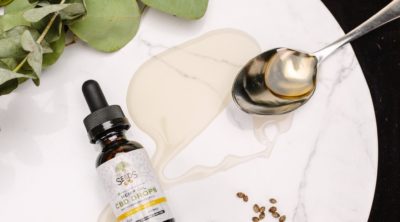Heat rash results when the body overheats and the sweat ducts get blocked and swell. These are common in children, however, adults may also experience them especially in hot and humid climates. This article provides some information on the treatment options available for this condition. It also includes some prevention measures for the same.
Heat rash is a type of skin rash caused due to excessive heat. Skin folds and friction due to clothing are often the main causes of this skin condition amongst adults. A hot and humid weather or climate is another common cause. Also known as ‘prickly heat’, it may occur when there is a lot of physical activity which makes one sweat profusely. Along with rashes comes infections. The signs of infection may include pain, swelling, redness, or warmth around the rash area, pus in the rash area, swollen lymph nodes, high fever, having chills without any reason, tiredness due to heat, along with dizziness, and a rapid pulse. In case one observes any of these symptoms, he/she need not panic. One can just try these simple remedies to alleviate the discomfort. Generally, doctors are of the opinion that staying out of the sun and keeping the skin cool is the best treatment for this skin condition in adults and children.
Treatment
Most of the time, this skin condition gets healed within a day, usually on transfer to a cooler environment. Here are the steps which one can take for treating the same.
#1 Frequent Washing
Wash the affected area with a gentle soap. Now, rinse the affected area and gently pat dry the area with a soft towel. Have cool showers several times a day, especially after exercise or a long walk under heat exposure.
#2 Cooler Environment
Try to remain in a cool environment which will allow adequate ventilation of the skin. Resting in an air-conditioned room also helps in relieving this skin problem. However, if one does not have access to air conditioning, he/she can go to places, like, indoor shopping malls, grocery stores, movie theaters, hotel lobbies, ice skating rinks, bowling alleys, etc. In short, avoid exposure to the sun.
#3 Avoid Skin To Skin Contact
Take pieces of clean and soft cotton cloth and place them in areas where there are skin folds, e.g. under the breasts, abdomen, etc. This will help in avoiding skin to skin contact. Another remedy is to apply frozen packs of peas or other cool packs over the affected areas, especially for this condition on the face. However, one should be careful not to leave the frozen packs for more than twenty minutes.
#4 Oral Medication
One can also apply mild cortisone creams, like, hydrocortisone or prescribed cortisone creams like triamcinolone. These are believed to be very helpful in resisting rashes. Oral medication such as diphenhydramine or loratadine are also said to help decrease itching which can result from a heat rash. Furthermore, one can take topical antibiotics that may be needed for antibacterial infections.
#5 Wear Loose Clothing
Wear loose clothing that is made of natural fibers such as cotton as much as possible. One can also opt for polypropylene which is designed to remove sweat from the skin. Try to stay out of the heat and avoid going out into the sun as much as possible for a few days. Do this until the rash clears up. One should consult a physician immediately in case none of the remedies work, the condition still persists or worsens, becomes infected, or if he/she develop a high fever.
Preventive Measures
It is easy to prevent this skin condition. Prevention is the same for children as well as for adults. One should avoid overdressing or wearing tight clothes and allow their skin to breathe. If one is going out in the hot weather, he/she should make sure to dress lightly and wear fabrics that can keep him/her cool from inside. One should keep their skin cool and dry, and avoid heavy moisturizers. He/she should also keep his/her sleeping area cool and well-ventilated.
Following the aforementioned remedies and prevention tips might prove beneficial. When one develop these rashes, he/she should wait for some days and then gradually expose themselves to the heat. However, this should be done only after all the rashes get healed.
Disclaimer: This HolisticZine article is for informative purposes only, and should not be used as a replacement for expert medical advice.


